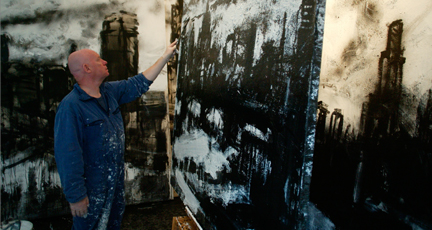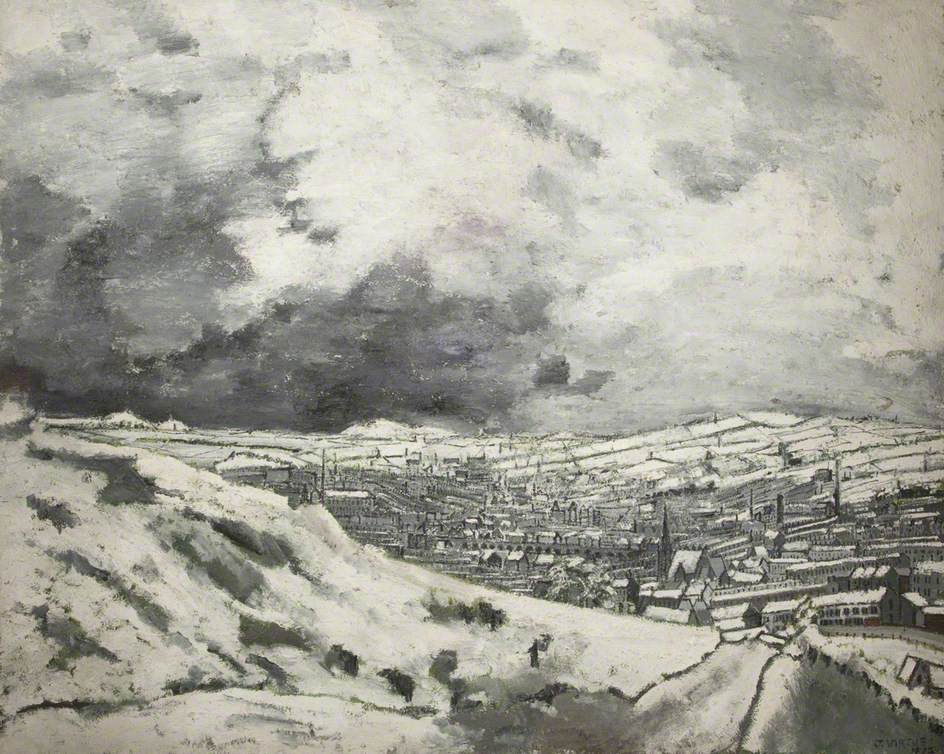For this assignment three, I looked through all the previous exercises of part 3, and therefore I put together some ideas and tips for the final drawing. These ideas and tips are based on the mark-makings, colours, mediums, materials and etc.
My chosen subject for this assignment is based on my garden and the vegetable greenhouse. I find the greenhouse full of interesting natural objects such as pots, shrubs and plants. The fact that why I chose this subject, is because I can combine a building such as the greenhouse with a nature scene, which is the garden and the distance lawn. The view also gives the understanding of aerial and linear perspective, which also shows the three different ground levels and depth in the distance.
So before getting into this assignment, I first did preliminary sketches in the A4 sketchbook and keeping my log book up to date.
Stage One – Preliminary Sketches
The preliminary sketches were all done in the A4 sketchbook in the morning on a sunny, clear sky with cold breezes. I planned on doing a landscape format in this assignment, because why, the nice thing of doing a landscape format, is that you have more perspective and depth options. Also there is wide range of different objects that can be moved or taken out of the view. The landscape format can also give me the option of expanding my mark-makings in different sizes across the drawing.
First preliminary sketch was done with the black gel pen in the A4 sketchbook on page 18. I love the cross hatching mark-makings on the greenhouse, also the favourite thing about this view is that there is a nice perspective and depth in this view. I find the black gel pen really nice to create a nature atmosphere feeling, but also it would be better with colour ink washes.
You can see the result in Fig. 1 “First Preliminary Sketch with Black Gel Pen – A4 Sketchbook (Page 18)“, below.

Second preliminary sketch was done with the HB graphite pencil in the A4 sketchbook on page 19. I find this drawing the least favourite view, it’s boring, less exciting and the greenhouse shade has covered up the most interesting plants in this view. But on the other side is that it has a good perspective to draw from. So this view point is not well suited for the final drawing.
I also don’t like the use of the HB graphite pencil, but also could’ve used a 2B or 4B graphite pencil for the dark tonal areas.
You can see the result in Fig. 2 “Second Preliminary Sketch with HB Graphite Pencil – A4 Sketchbook (Page 19)“, below.

Third preliminary sketch was done with the black Conté pierre noire H pencil in the A4 sketchbook on page 20. This view point is nice and also has interesting perspective to deal with. The one main issue I struggled was the three steps in the foreground, this could probably be caused by having a lot of horizon lines in the three different ground levels. I also lacked the interest in not having the feeling connection in this drawing, I find it very contrast as this was a very shaded area.
You can see the result in Fig. 3 “Third Preliminary Sketch with Black Conte Pencil – A4 Sketchbook (Page 20)“, below.

Stage Two – Broad Sketches
For the broad sketches part, I did the broad sketches with diluted black acrylic drawing ink and oriental brush in the A4 sketchbook on page 21. I focused on the two preliminary sketches in stage one for the broad sketches. The two selected stage one preliminary sketches view points are, Fig. 1 “First Preliminary Sketch with Black Gel Pen – A4 Sketchbook (Page 18)” and Fig. 3 “Third Preliminary Sketch with Black Conte Pencil – A4 Sketchbook (Page 20)“.
I wanted to see which view from the two preliminary sketches will really work well for my final assignment drawing.
The main things I looked out for are:
- Natural Objects that interest me.
- Good linear perspective and composition to draw from.
- Depth and distance in the three ground levels.
- Shapes and sizes that work well in the subject and atmosphere.
So I drew two frames on one page in my A4 sketchbook and filled them with the two view points by using the diluted black ink and oriental brush. I only focused on the composition, tonal values and the main big object shapes.
By doing this way, I found my selected view point for the final drawing, which is frame one sketch, also same view as the stage one preliminary sketch Fig. 1 “First Preliminary Sketch with Black Gel Pen – A4 Sketchbook (Page 18)“.
I love the view of this broad sketch, I also found the perspective and composition great. The tonal values came out correct and it has a more balanced depth than frame two sketch below frame one sketch.
You can see the broad sketches in Fig. 4 “Broad Shapes Preliminary Sketch with Black Diluted Ink & Chinese Brush – A4 Sketchbook (Page 21)“, below.

Stage Three – Test with Colour Inks and Black Gel Pen
I decided to do a quick test on mixing ink colours and going over with the black gel pen in the A4 sketchbook on page 22. I chose these two mediums for my final drawing, because they have many ways to explore the feelings by doing different mark-makings. Also inks have nice colours to create a bold, characteristic and different feelings that relate to the subject. So these two mediums have same characteristics to blend well in many ways.
It turns out that I really like the colours and the gel pen results.
You can see the tests results in Fig. 5 “Tests on Diluted Ink Colours & Chinese Brush with Black Gel Pen – A4 Sketchbook (Page 22)“, below.

Final Drawing:
For the final drawing stage, I was very impressed with all the previous stages drawing results of this assignment so far. Ready to start the final drawing and it was nearly afternoon with warm breeze, sunny and cloudy, when I started the final drawing. I went outside with my A2 white cartridge paper 200gsm taped to the drawing board and a HB graphite pencil to draw the linear perspective, composition and large shapes in soft faint lines. This way helps me to make sure that the perspective, composition, distance and object sizes are all in the right stage to go into detail with diluted inks.
After doing the graphite pencil drawing stage, I went over the large open spaces in diluted colour inks with oriental brush, these large areas were such as the sky, grass, green house netting shades and the field. After filling the large open spaces, I went on in with the mid tones ink colours, and then after that was the dark tone ink colours.
Finishing the inks colours stage and waited for it to dry, before I went over with the black gel pen across the whole drawing with different mark-makings. After doing the mark-makings with the black gel pen, I stood back and looked at my drawing to double check what really need to be fixed or added. There were some areas where they need more darker ink colours and other areas needed a bit more touch of marks. Then I took another step back and looked at my drawing again, then I realized that I’m 100% happy with the results so far. I also warned myself to not overwork it, just like my tutor told me before.
You can see the final drawing results in Fig. 6 “Final Drawing “My Veggie Garden with Greenhouse” – A2 White Paper, Diluted Ink & Oriental Brush, Black Gel Pen“, below.

The facts that I love about the final drawing results, is that I really have the atmosphere feeling of home and it’s warm welcoming, no matter it’s still winter here. I love the mark-makings, as they describe my emotions of being happy with bright colours. The perspective and composition of the greenhouse is what I was looking forward at the end of this drawing, because that was my main focal point. The sky is full of energy and movement. The lawn is always half green and half dry, as it has been like this when living in South Africa’s climate. The depth in this drawing makes it more interesting because of the tree in middle ground and background trees in the far distance helps to give this drawing some atmosphere space.
The mediums I used for this drawing was inspired from a previous exercise final drawing that I did in Kimberley. The inspired drawing link is below:
Link: https://tristanfineart.wordpress.com/2020/07/06/part-3-project-5-exercise-1-sketchbook-of-townscape-drawings/ for the Exercise 1: Sketchbook of Townscape Drawings – final drawing Fig. 3 – “Final Drawing “The Western Looking Town Street” – A4 Sketchbook (Page 7)“.
Close-Ups of Final Drawing in Fig. 6 “Final Drawing “My Veggie Garden with Greenhouse” – A2 White Paper, Diluted Ink & Oriental Brush, Black Gel Pen”



Log Book Photos:


My Assessment Reflection Criteria Points is on it’s own page, here is the link for the page – Link: https://tristanfineart.wordpress.com/2020/07/19/drawing-1-part-3-expanse-reflection-assessment-criteria/

















































